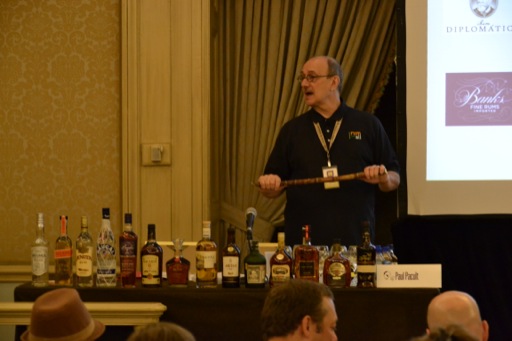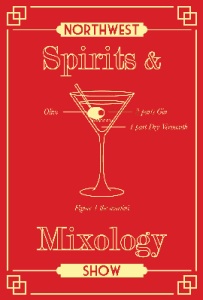Tales of the Cocktail: Rum w/ Paul Pacalt and Sean Ludford
August 28, 2012 by Mr. Boozenik
Filed under Spirits Events
Sugar cane is native to probably New Guinea, and while it had spread in the old world, it was not in the New World until Colombus’s second voyage carried sugar cane probably from the Canary Islands. Soon after cane, came rum.
Rum soon became the most popular spirit, as the taste for sweetness prevailed in Europe and the American colonies. Oddly much rum was made away from the cane growing areas, using transported molasses. In the early English American colonies, Massachusetts and Rhode Island were the heart of rum-making and the associated industries, coopering, etc., sprang up to support it. The American War for Independence and the 1812 War forced America to switch from the now embargoed, and thus very expensive, rum to whiskey.
Afterward rum in the U.S. suffered through the “fun” first half of this century, with WWI, Prohibition, and WW2. Only veterans coming back from the tropics and tiki brought rum back to prominence. But the convenience trend, daiquiri-in-a-jug, (the TVdinner of cocktails, with colors not found in nature) and vodka did more damage to rum’s reputation and market share.
But now, 10 years into Tales of the Cocktail, we’re seeing rum drinks made right. Bartenders are using fresh ingredients, and it’s giving rum another big chance to be the big spirit in the U.S.
And now for some very brief tasting notes, from when we breezed through an impressive collection of spirits:
Shellback Silver: clear with slightly toasty, caramel flavors, blended from several Barbados rums
10cane: honey sweet and somewhat silky, with some caramel and vanilla and pear, should be a nice mixing rum for lighter rum cocktails especially where texture would be important. Definitely a nice mojito and rum punch rum
Denizen: a chewy white rum, blended in the Netherlands from 3differnt distilleries: column from Trinidad, and column and pot still from Jamaica. Fruity, mango, papaya, black olive tapenade
Brugal especially dry: more wood and dry sensations, delicate
At which point Paul, taking a sniff, quipped: “my nostrils are insured by Lloyd’s of London… They wouldn’t cover any of the rest of me, though”.
Banks 7: a blend of 23!!! rums from seven nations including Javanese Batavian arrak, which is according to Paul, “like the bitters that make a manhattan a complete cocktail”. This rum is super funky and complex, chewy.
Bacardi 8: blending of some of the massive older stock that bacardi has been saving, dried fruit, brown butter caramel, slight woodiness, toasty, nutty, Paul’s favorite rum old fashioned, “makes you want to run to the fireplace, and stroke the Irish setter”. At this point the conversation turned markedly, and amusingly inappropriate.
DonQ Gran Añejo : see our existing long form review at http://boozenik.com/bottle-reviews/review-don-q-anejo/.
Depaz Blue Cane: big herbaceous, lightly spicy, red bell pepper, grassy, sweetness and fullness, part of the only 3% of all rums that can be called Rhum Agricole.
Diplomatico Reserva Exclusiva: a 12 year, made in a giant facility built by Seagrams, with seven different stills (three pot stills and four column) making a wide variety of spirits, made from cane honey and darker molasses: more floral than others, sweet, w/ banana and pear and nutmeg and a boldness that it shares with some other Venezuelan rums.
Appleton Estate Reserve: pot and column distilled, this is far less funky than most Jamaican pot still rums. The cane harvested without burning, and the taste is honeylike and oddly dry for a Jamaican rum.
Mount Gay Extra Old: single and double distilled rums blended ex-bourbon casks only used three times, from rums that are mostly between 16 and 18 years old. We noticed confectionary flavors and aromas and vanillas showing off the rum and the wood in which it was aged. Sipped straight, and in an old fashioned, this would be a good spirit.
Flor de Cana 18: estate grown cane giving them total control, molasses-based, white oak, obvious example that there is terroir to cane. Honey like, beautiful.
Zacapa 23: one of the very few women distillers and blenders. The spirits industry first press of the cane, high attitude aging, so slower than the rest of the rum makers, solera-style with continuous blending as it ages, rather than only at the end. Tastes of Christmas cake and arancio. Lots of depth.
And I will close, echoing Paul’s lament: “Why oh why are there only 24 million cases of this imported into the us?”







